
Last fling before Virginia
June 15th, 2010
Went walking today, starting from Dominion Station and heading northeast along the river. This was a "this day's too beautiful to waste" walk, not a birding walk per se, but I brought along my binoculars on general principle.
I'm glad I did! I ended up at Champlain Bridge--I didn't realize the hike from Dominion to there was so short. This bridge is a nesting site for Cliff Swallows, probably the scarcest of Ottawa's six swallow species, certainly one I don't see every day. (These are the guys who, famously, "return to Capistrano"--although of late, those particular Cliff Swallows have relocated.) I'd heard about the colony but never come to see it before. I took a stairway up, and found that the bridge had both a bike lane and a pedestrian lane (have I mentioned I love my city?), so I followed along and watched for them. Ended up seeing quite a few flying back and forth, their pale buff-colored rumps (and sometimes their white forehead spots) clearly visible. From down on Bate Island, I was even able to see one of the rows of nests. They build them out of mud along the sides of the bridge.
On the bike path, a smell of carrion attracted a Turkey Vulture who, in turn, attracted the attention of several angry songbirds. (Not sure why they bother harassing a vulture...maybe he could prey on a nestling?) Yellow Warbler parents were busily carrying insects to their young. And at one point, on the ground, was a quite young but out-of-the-nest Red-Winged Blackbird. His head wasn't even fully feathered yet.
This will be my last outing before Virginia. We're leaving in three days, and I have lots to do before then.
A Dragonfly Quintet
June 14th, 2010
I'm starting to learn my dragonflies. At Stony Swamp last week, I saw five different species in one day.
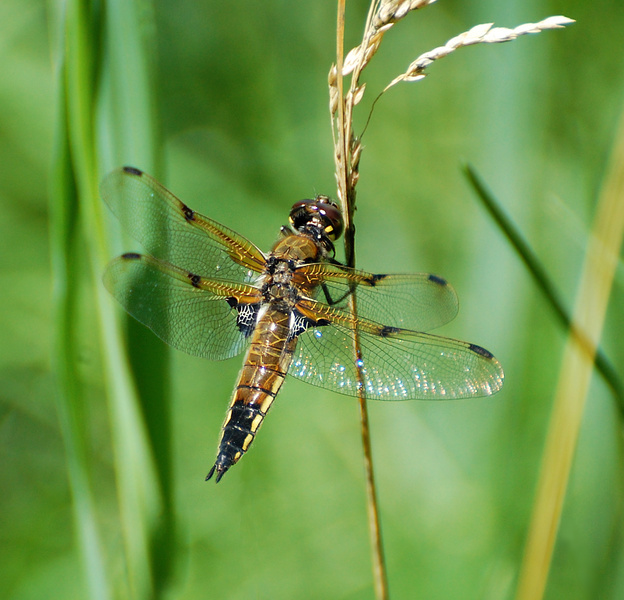
( More )
Stony Swamp Pix
June 13th, 2010
Increasingly, I'm using Old Quarry Trail as a starting point rather than a destination. That's the part of Stony Swamp that I can get to by bus. But the trails are all interconnected, so from there, given sufficient stamina, I can get just about anywhere.
I've been exploring trails 24 and 25 lately, along with bits of the Trans Canada and Rideau Trails, and loving what I'm discovering. Among other things, this area is a motherload for breeding Scarlet Tanagers. If you hear what sounds like a hoarse robin song--or a call like "chick-burr"--stop and scan the canopy. When you see something so red you can't believe your eyes, you've found it.
This is the time of year when bird photography becomes frustrating. Especially in the woods. Spring migration is over, and the birds are settled in to the business of nesting and rearing young. Most of them are staying hidden, or (like the tanagers) way up in the branches.
Fortunately, this is also the time of year when butterflies start coming out in droves!

White Admiral
This female Rose-Breasted Grosbeak was cooperative, though.

1680x1050 wallpaper
As was this cardinal.

Three Odd Birds
June 3rd, 2010
Lesson learned: When wading through knee-deep grass in early morning shortly after the dispersal of morning mist, you might as well be wading through a swamp. Wear waterproof boots. Heck, wear waterproof pants!
That said, on to the pictures.

The area south of the airport is teeming with Bobolinks. I didn't realize just how many it supports until now (with spring migration completed). They and the meadowlarks duet from the open fields off High Road: the meadowlarks' wistful "see-yur"s and the bobolinks' resonant, almost electronic chatter. Those fields are fenced off, but now and then a bobolink or even a group of them perches on the fence, giving me a photo opportunity.
The meadowlarks, alas, do not perch on the fence. They don't even come close.

Investment: a half hour of wading through wet grass and weeds resulting in shoes, socks and jeans soaked to the skin. Payoff: my first good picture of a Common Yellowthroat!
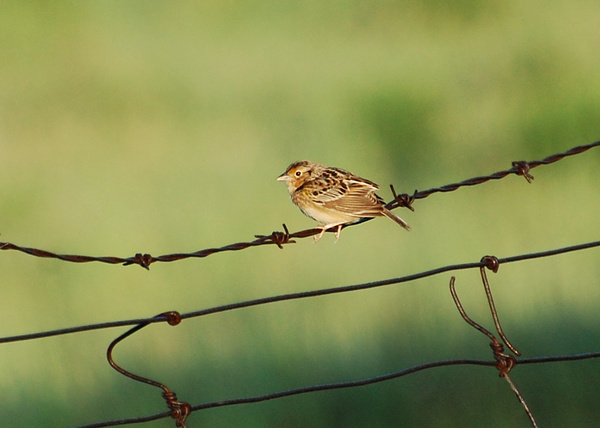
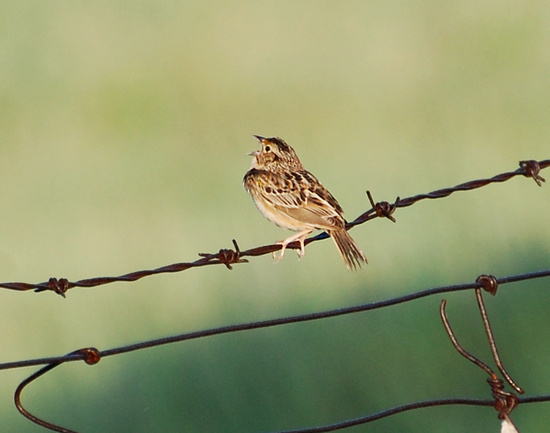
I got lucky when a Grasshopper Sparrow--usually a shy, secretive bird--chose to sing on the fence, and furthermore, let me get close enough for a few at least half-decent shots, before he vanished into the ether for the rest of the morning. The hunched appearance in the first picture is typical of this species, as is the spiky tail in the second.
Tiger Swallowtail
June 2nd, 2010

1680x1050 wallpaper
Hobomok Skipper
May 30th, 2010

1680x1050 wallpaper
Lovely pictures with a side of heat exhaustion
May 26th, 2010
Another Purple Martin shot from Tuesday.
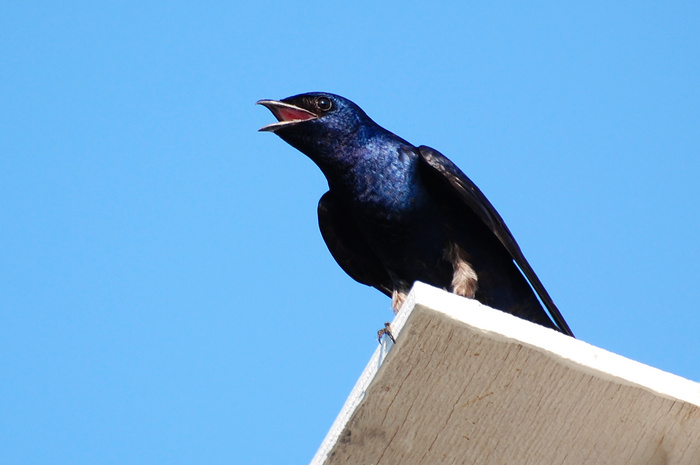
These beautiful birds are the largest swallows in North America, with flight skills second to none and a voracious appetite for insects. The mature males, as above, are all-over black with an indigo sheen. Females and young males (under two years of age) are light in front with variable splotching and streaking.
In the east, Purple Martins nest almost exclusively in manmade colonial nest boxes. The colony at Dick Bell Park (Nepean Sailing Club) is particularly large and well-managed. They band hundreds of nestlings every year.
Meanwhile, Andrew Haydon Park is overflowing with goslings. The older ones are starting to lose their yellow hue.
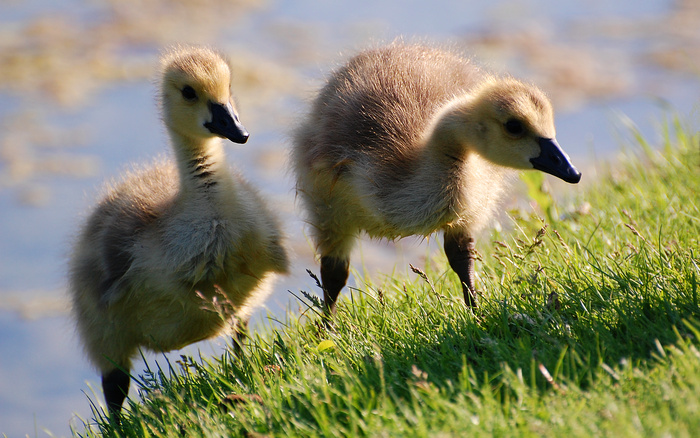
How they felt about it
May 25th, 2010
Photographs taken at the Purple Martin colony at Dick Bell Park, on a very hot day.
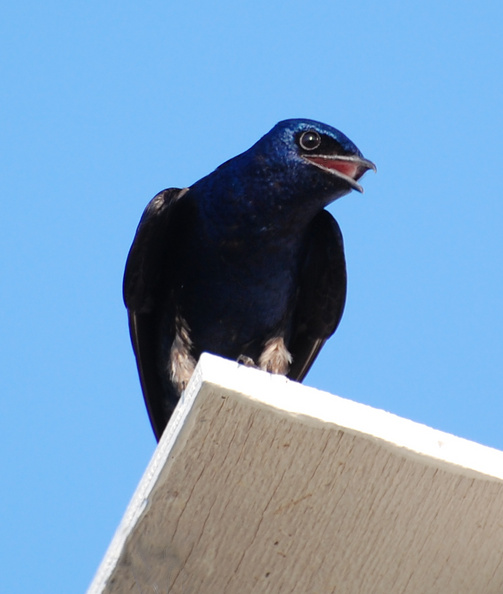
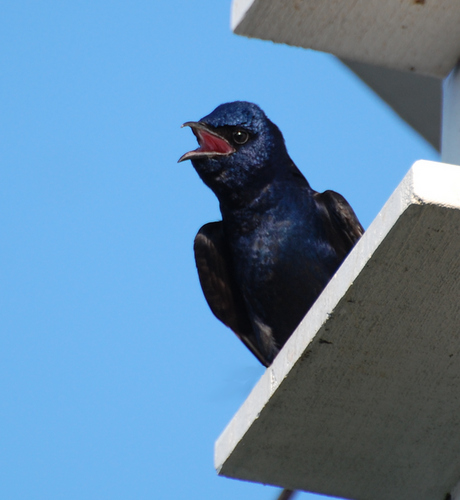
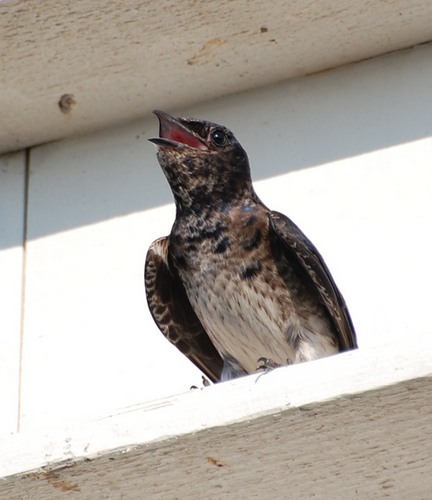
These birds are not singing. They are panting.
A Seven Sparrow Day
May 24th, 2010
Out to the fields and scrubland south of the airport today with Gillian, who had very graciously offered to show me around. It was a wonderful morning, with bobolinks in full flight display, meadowlarks singing in the distance, and sparrows galore. (And, as the morning wore on, one seriously hot and baking sun.)
In addition to the five I had already met--Chipping, Song, Savannah, Vesper, Field--today's expedition introduced me to Clay-Colored Sparrow and Grasshopper Sparrow. Both were neat, but it was the Grasshopper Sparrow that stole my heart. If you weren't expecting otherwise, you really would think it was just an insect! Until you notice that tiny, strange, flat-headed brown bird perched on top of a weed (or a fence post, or an old stump), and he throws his head back with each "bzzzzzzz." Occasionally they sing from the grass, and if they're not singing, the grass is almost certainly where they'll be. In which case, give it up. You will not spot them. They have flat heads for a reason.
And the flight style. The field guide said "flight feeble." That didn't prepare me for what I saw. The wings barely flap, they seem to just vibrate--as if he were some sort of overgrown moth.
Speaking of House Wrens (i.e. the gazillions of them at Point Pelee), I have discovered their enclave in Ottawa. There seemed to be one singing from every other tree.
We went by the pond on Earl Armstrong Road, where I'd never been before. In terms of diversity, it was definitely the most swallowy place I've been. Barn, Bank and Cliff Swallows all circling over the water and perching on sand banks, and Tree Swallows on the power line behind us. Cliff Swallows in Ottawa is a first for me; I'd previously only seem them at Dutch Gap in Virginia.
The two most interesting birds--a Mourning Warbler which would be a lifer for her, and a Cuckoo (Black-Billed or Yellow-Billed) likewise for me--went heard but unseen. We bushwhacked our way into the woods where the Mourning Warbler was singing, but he stopped singing before we could find him. Then, once we'd painstakingly bushwhacked our way out, he started singing again. Figures!
An abundance and diversity of butterflies in this area, too. American Copper, Common Ringlet, Silvery Blue and Tiger Swallowtail, among others.
On Wednesday, I'm going back with camera.
Point Pelee Part 6: Killdeer - Wild Turkey
May 23rd, 2010
Killdeer: The adorable common breeding plover. Though they're shorebirds by definition, killdeers often live inland: in Virginia and Carolina, I see them on commercial lawns and at the edges of parking lots, even with their young. The ones I saw during the trip, though, were mostly near Lake Erie. They nested on the shore and in the grass just beyond it.
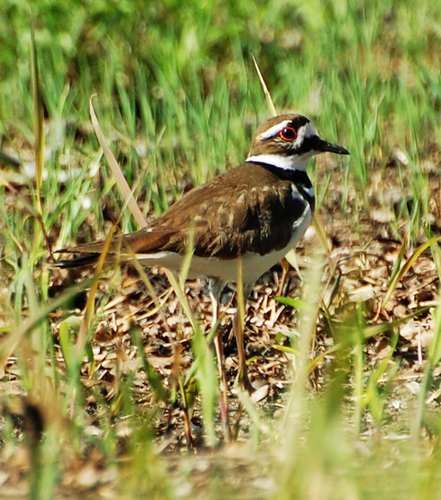
Northern Rough-Winged Swallow: This species apparently breeds in Thickson Woods. They were a common sight and sound there. Rough-Winged Swallows nest in burrows, often dug into stream banks.
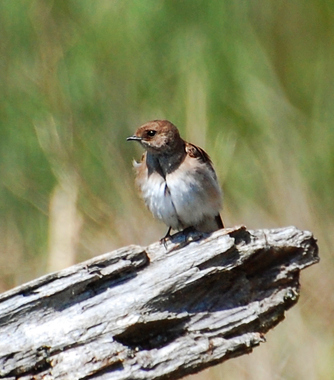
Orchard Oriole: Practically the first bird I saw, when we got off the bus at Point Pelee, was my first Orchard Oriole. I'd been looking forward to them. They're closely related (congeneric) to Baltimore Orioles, with similar patterning, but in place of the vivid orange breast, the male Orchard Oriole has deep chestnut. Quite handsome. The juvenile males are striking too: bright yellow with black throats.
Orchard Orioles are common at Point Pelee. They're one of the comparatively few species who actually breed there, as opposed to just passing through. Unfortunately they seem to be much less common in other nearby areas: I never had the opportunity to photograph one.
Red Admiral: This migrant butterfly has been moving through in unusual numbers this spring, both at Point Pelee and here in Ottawa. I photographed this one at Rondeau Provincial Park.
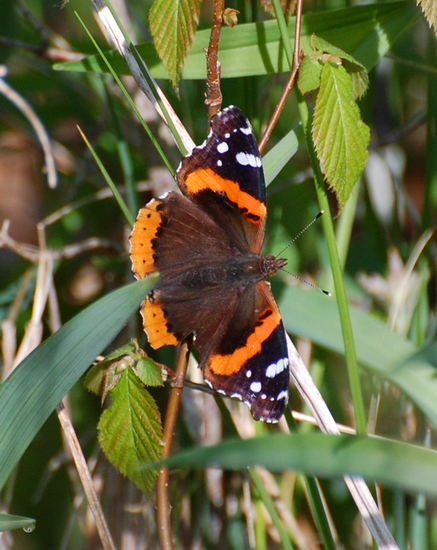
Scarlet Tanager: Seen and thoroughly enjoyed at both Pelee and Rondeau. Scarlet Tanagers are the birds who are redder than red, who blaze red, who put cardinals to shame. They are in our area--they breed in the Gatineau, for instance--but I seldom chance to see them.
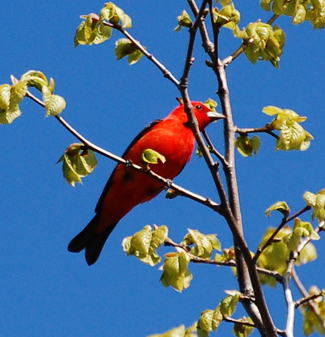
The Scarlet Tanager's southern cousin, the Summer Tanager, is also bright red and also occurs in far-south Ontario, but I don't think any of us found one.
Trumpeter Swan: A pair of them was in the distance at the Oshawa Marsh, viewable only by spotting scope. Their white plumage was heavily stained with rust, which apparently is common in this species because of the mineral-rich wetlands in which they forage. Lifer.
Veery: A tawny brown thrush with a beautiful, musical waterfall of a song. I and another photographer attempted to shoot him through a chain fence, and both found it tricky. I finally managed to get a half-decent shot by putting my camera on manual focus.
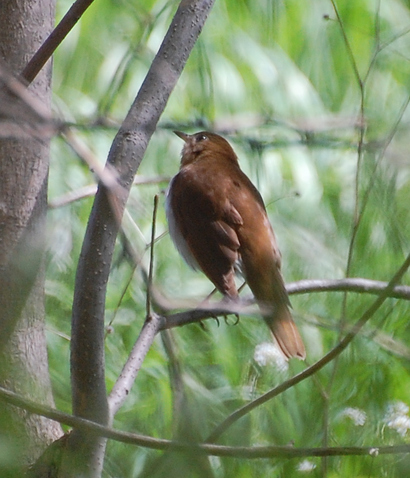
Wild Turkey: Saw a female on the nest at Tilden Woods! Very well-hidden in the underbrush, barely visible. Also had two toms walk by in the same area.
Thus ends the saga of Point Pelee. My next big extravaganza will be my parents' annual summer trip to Cape Hatteras, which Michael and I are taking part in. I'll be bringing the zoom lens there for the first time. Black-Necked Stilts, here I come :-)
|
